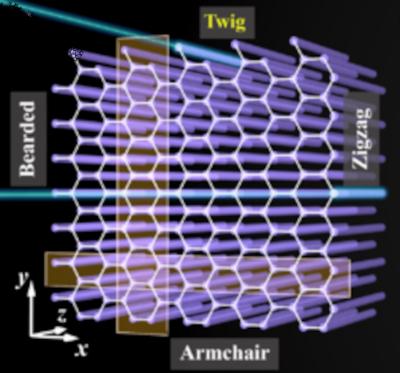Graphene and graphene-like materials can host—at their edges—localized states whose properties can differ dramatically from those of bulk states. Three types of edge states have been established in these materials—zigzag, bearded, and armchair—named after their geometry. Now, researchers from Nankai University and Shanxi University used a graphene-like photonic crystal to demonstrate the possibility of a fourth edge, called twig, with exotic topological features. Their results may broaden the understanding of graphene edge states, as well as open new avenues for realization of robust edge localization and nontrivial topological phases based on Dirac-like materials.
The team explained that the main findings were that the twig edge is a generic type of honeycomb lattice (HCL) edge complementary to the armchair edge, formed by choosing the right primitive cell (rather than simple lattice cutting or Klein edge modification). In addition, the twig edge states form a complete flat band across the Brillouin zone with zero-energy degeneracy, characterized by nontrivial topological winding of the lattice Hamiltonian. The twig edge states can also be elongated or compactly localized at the boundary, manifesting both flat band and topological features.
Although the team reached their findings in a photonic graphene, such twig edge states should exist in other synthetic HCL structures.
The result builds on the team’s earlier demonstration of a laser-based technique for “writing” an arbitrarily shaped array of waveguides in a crystal. Guided by simulations, they designed a honeycomb structure with twig-shaped edges and predicted that such edges would host nontrivial states. They then realized the structure as a honeycomb lattice of waveguides with a 32-µm lattice spacing. Finally, they used a laser to couple light into the twig edge states and studied how the light propagated through the waveguides. The results show the twig edge states have both topological and “flat band” features—two ingredients that can elicit intriguing phases of matter.
The team says that, together with the three previously identified edges, the twig edge forms a complete basis for describing all possible edge types in honeycomb lattices—any arbitrary edge can be described as a combination of those four types. As such, the new work could help in developing a general framework for describing edge states in graphene-like materials, which could be used to create and study new topological phases.
